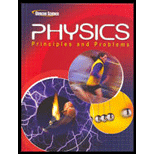
(a)
The optical phenomenon for producing the color in bubbles.
(a)
Answer to Problem 59A
Thin film interference
Explanation of Solution
Introduction:
An optical phenomenon in which the superposition of two light waves results in the formation of new wave with greater, lower or the equal amplitude compared to original waves is called an interference. The interference may be constructive or destructive depending on the phase difference between the interfering waves.
A soap bubble can be treated as a thin film of soap and water. The soap bubble has a very small thickness that is in the order few wavelengths of visible light. A part of the light incident on the soap bubble gets reflected back and remaining portion of the light gets pass through it. The light rays that are reflected from the outer surface of the bubble experience wavelength shift to some extent and the light rays reflected by the inner surface is shifted by some more distance that it covered. This leads to interference between the two reflected rays and attractive color can be seen on the soap bubble.
(b)
The causes for color produced in rose petals.
(b)
Answer to Problem 59A
Pigments
Explanation of Solution
Introduction:
The beautiful colors of the flowers makes it to be get attracted by living beings. The pollinators such as honeybees, hummingbirds, and butterflies are having attraction towards the flowers only because of the presence of coloring pigments in it. The main cause for the color of flowers is the presence of certain coloring pigments in it. This may also get affected by certain other factors such as presence of metal ions in the flowers.
The presence of certain pigments gives color to the rose petals. Carotenoids and flavonoids are two main types pigments in flowers. Carotenoids mainly contains the pigment carotene that gives yellow, orange, and red color to the flowers. While flavonoids mainly contains the pigment anthocyanin that gives red, purple, magenta, and blue color to the flowers.
(c)
The optical phenomenon by which color is produced in oil films.
(c)
Answer to Problem 59A
Interference
Explanation of Solution
Introduction:
Interference of light waves is an optical phenomenon defined as the superposition of two light waves to produce a resultant wave with greater, lower or the equal amplitude.
The thickness of the oil films are in the order few wavelengths of visible light. The light rays reflected from the top surface of the oil film is shifted by some wavelength and the light rays reflected by the bottom surface is shifted by some extra distance that it covered. This leads to interference between the two reflected rays and beautiful color can be seen on the oil film.
(d)
The optical phenomenon by which color is produced in rainbow.
(d)
Answer to Problem 59A
Refraction
Explanation of Solution
Introduction:
Refraction of light waves is the change in direction or bending of light waves when it travels from one medium to another. The degree of refraction depends on the
Rainbow is a spectrum of light appears in the sky and is forming due to the refraction of light rays from water droplets in the atmosphere.
Chapter 19 Solutions
Glencoe Physics: Principles and Problems, Student Edition
Additional Science Textbook Solutions
Introductory Chemistry (6th Edition)
Genetic Analysis: An Integrated Approach (3rd Edition)
Campbell Biology in Focus (2nd Edition)
Campbell Biology (11th Edition)
Anatomy & Physiology (6th Edition)
Chemistry: An Introduction to General, Organic, and Biological Chemistry (13th Edition)
- (a) For a spherical capacitor with inner radius a and outer radius b, we have the following for the capacitance. ab C = k₂(b- a) 0.0695 m 0.145 m (8.99 × 10º N · m²/c²)( [0.145 m- 0.0695 m × 10-11 F = PF IIarrow_forwardA pendulum bob A (0.5 kg) is given an initialspeed of vA = 4 m/s when the chord ishorizontal. It then hits a stationary block B (1kg) which then slides to a maximum distanced before it stops. Determine the value of d.The coefficient of static friction between theblock and the plane is μk = 0.2. The coefficientof restitution between A and B is e = 0.8.Ans: d=1.0034 marrow_forwardFigure 29-43 Problem 12. ••13 In Fig. 29-44, point P₁ is at distance R = 13.1 cm on the perpendicular bisector of a straight wire of length L = 18.0 cm carrying current i = 58.2 mA. (Note that the wire is not long.) What is the magnitude of the magnetic field at P₁ due to i? P2° R R Larrow_forward
- Checkpoint 1 The figure shows the current i in a single-loop circuit with a battery B and a resistance R (and wires of neg- ligible resistance). (a) Should the emf arrow at B be drawn pointing leftward or rightward? At points a, B C R b, and c, rank (b) the magnitude of the current, (c) the electric potential, and (d) the electric potential energy of the charge carriers, greatest first.arrow_forwardPls help ASAParrow_forwardPls help asaparrow_forward
 College PhysicsPhysicsISBN:9781305952300Author:Raymond A. Serway, Chris VuillePublisher:Cengage Learning
College PhysicsPhysicsISBN:9781305952300Author:Raymond A. Serway, Chris VuillePublisher:Cengage Learning University Physics (14th Edition)PhysicsISBN:9780133969290Author:Hugh D. Young, Roger A. FreedmanPublisher:PEARSON
University Physics (14th Edition)PhysicsISBN:9780133969290Author:Hugh D. Young, Roger A. FreedmanPublisher:PEARSON Introduction To Quantum MechanicsPhysicsISBN:9781107189638Author:Griffiths, David J., Schroeter, Darrell F.Publisher:Cambridge University Press
Introduction To Quantum MechanicsPhysicsISBN:9781107189638Author:Griffiths, David J., Schroeter, Darrell F.Publisher:Cambridge University Press Physics for Scientists and EngineersPhysicsISBN:9781337553278Author:Raymond A. Serway, John W. JewettPublisher:Cengage Learning
Physics for Scientists and EngineersPhysicsISBN:9781337553278Author:Raymond A. Serway, John W. JewettPublisher:Cengage Learning Lecture- Tutorials for Introductory AstronomyPhysicsISBN:9780321820464Author:Edward E. Prather, Tim P. Slater, Jeff P. Adams, Gina BrissendenPublisher:Addison-Wesley
Lecture- Tutorials for Introductory AstronomyPhysicsISBN:9780321820464Author:Edward E. Prather, Tim P. Slater, Jeff P. Adams, Gina BrissendenPublisher:Addison-Wesley College Physics: A Strategic Approach (4th Editio...PhysicsISBN:9780134609034Author:Randall D. Knight (Professor Emeritus), Brian Jones, Stuart FieldPublisher:PEARSON
College Physics: A Strategic Approach (4th Editio...PhysicsISBN:9780134609034Author:Randall D. Knight (Professor Emeritus), Brian Jones, Stuart FieldPublisher:PEARSON





